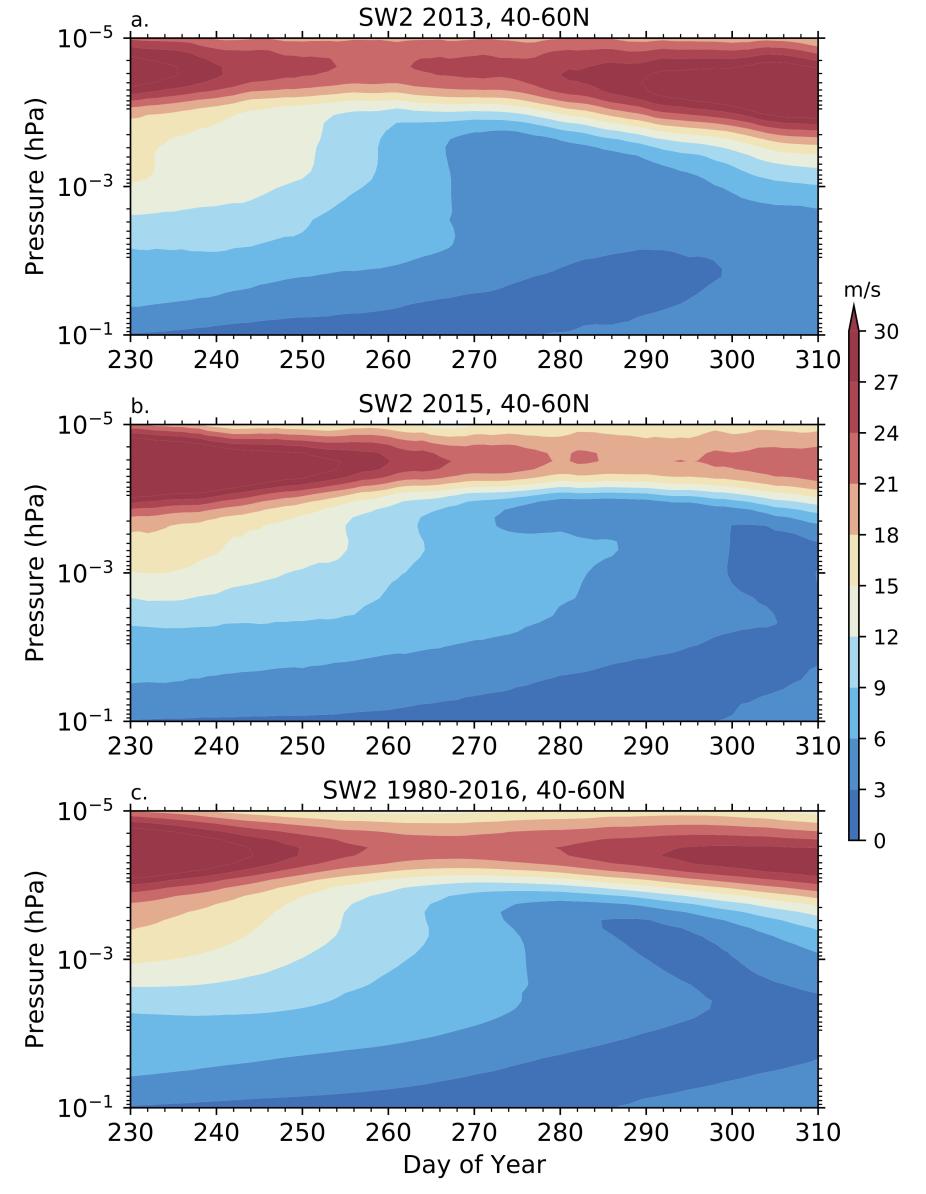Publication Name: Journal of Geophysical Research - Atmospheres; First HAO Author's Name: Nick Pedatella; Authors names as they are listed in article: N. M. Pedatella, H.-L. Liu, J. F. Conte, J. L. Chau, C. Hall, C. Jacobi, N. Mitchell, and M. Tsutsumi
Specified Dynamics Whole Atmosphere Community Climate Model with thermosphere-ionosphere eXtension (SD-WACCMX) simulations are used to investigate the solar migrating semidiurnal tide (SW2) around September equinox at middle to high latitudes in the Northern Hemisphere.

The migrating semidiurnal tide amplitude in zonal wind averaged between 40-60N during (a) 2013, (b) 2015, and (c) the 1980-2016 average. The results are based on SD-WACCMX simulations, and demonstrate that the SW2 minimum occurs earlier during a year (2013) with an earlier seasonal transition in the Southern Hemisphere stratosphere compared to climatology. Similarly, the minimum occurs later during a year (2015) with a later seasonal transition.
A pronounced minimum in SW2 occurs around September equinox, and is characterized by a ~50% reduction in tidal amplitudes for 20-30 days. Analysis of the simulation results indicates that the SW2 minimum occurs due to the seasonal transition of the zonal mean zonal winds, which alter the generation and propagation of different symmetric and antisymmetric modes of SW2. In particular, the antisymmetric modes notably decrease due to the more hemispherically symmetric zonal winds around equinox. It is further demonstrated that interannual variability in the timing of the SW2 minimum is related to the timing of the seasonal transition of the zonal mean zonal winds in the Southern Hemisphere stratosphere. This leads to an earlier occurrence of the SW2 minimum during years when the seasonal transition occurs earlier, such as the recent 2019 September equinox which saw an earlier transition of the Southern Hemisphere zonal mean zonal winds following the occurrence of a sudden stratosphere warming. The connection between the timing of the SW2 minimum and the Southern Hemisphere stratosphere is confirmed by specular meteor radar observations at middle to high latitudes in the Northern Hemisphere.